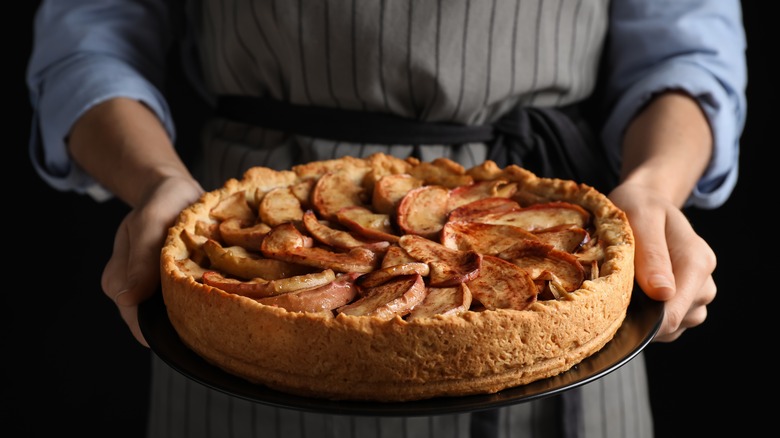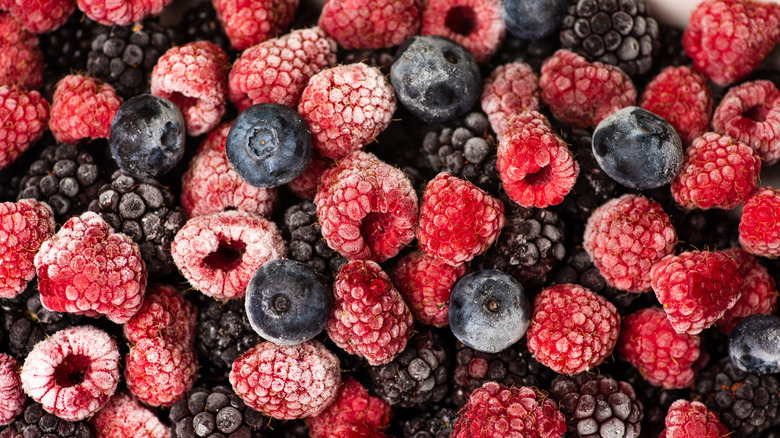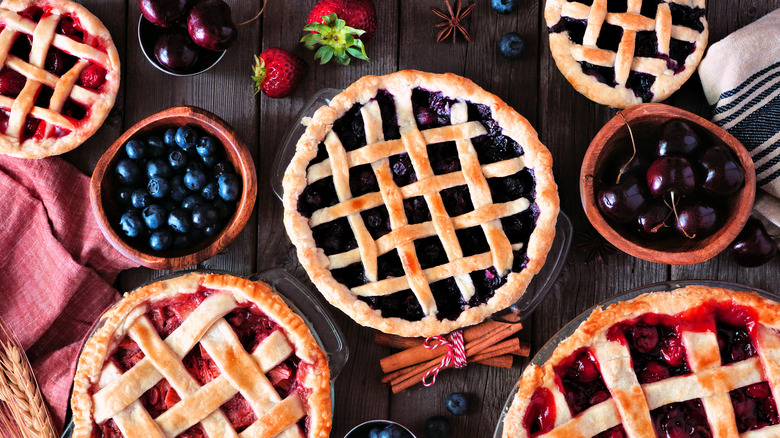Does Frozen Fruit Really Make A Pie More Runny Than Fresh?
Homemade pies can mean one thing to someone and another thing to someone else. For instance, some people interpret "homemade" as making everything from scratch and using fresh fruit for the filling. Others might say defrosting store-bought frozen pies and baking them in the oven at home counts as homemade. People are always finding ways to save on time or cost, like using a premade pie crust or using frozen fruits as a substitute for fresh fruits in the filling, which is 100% a-ok!
The frozen fruits that typically feature in desserts are berries (blueberry, raspberry, strawberry), stone fruits (cherries, peaches), and apples. One thing to remember when using these frozen fruits in baking is that they are not an identical substitute for fresh fruits for two important reasons. Firstly, frozen fruits tend to be sweeter than fresh fruits because commercial food suppliers pick fruits that are fully ripened to freeze and this is when they are full of natural sweetness. Secondly, frozen fruits tend to release more moisture as they thaw. So when these frozen fruits are made into pie filling, they can be runny or watery, which in turn makes the crust soggy. This does not sound appetizing at all, so here are some tips on how to get a pie with a flaky, buttery crust and chunky, jammy filling even when using frozen fruit.
Add a thickener to absorb the liquid
Traditionally, frozen fruits should only be defrosted if you are using them in a recipe that calls for a short cooking time. When it comes to baking, fruits can be frozen when you put them in the oven and the heat will both thaw and cook them. However, if you thaw your frozen fruits out of habit, this is perfectly okay. If you are thawing your frozen fruits in order to make a pie filling, you might notice that the fruits will become a bit mushy, because when the water in the fruit freezes, it expands, causing the cell walls to break. This oozing will occur whether you thaw your fruit prior to baking, or whether you're letting the oven do its job.
The liquid that seeps out is flavorful fruit juice so it is a shame to drain it away, but no one wants a soggy pie. One way to mitigate this is to add an extra 1/4 teaspoon of a thickener per cup of fruit in the filling to absorb some of the moisture so you do not end up with a gloopy pie at the end. Common thickeners for a fruit pie include cornstarch, all-purpose flour, and even quick-cooking tapioca.
Bake the pie for longer when using frozen fruits
The other thing you might need to adjust when using frozen versus fresh fruit in your pies is the baking time. If you do not use a thickener, it helps to add on an extra 10 to 15 minutes of baking time so that you cook off a bit more of the fruit's water content. Note that this can be a bit tricky because that extra time can burn the crust, particularly if it has an egg wash.
Now that you have all the tips and tricks, consider which frozen fruit you want to incorporate into a pie. Bon Appétit's suggestion here is to avoid frozen peaches, strawberries, and raspberries "since they turn to mush easily." Instead, the publication recommends frozen blueberries, cherries, and blackberries for pie, which are generally crowd-pleasers anyway.
This can range from a classic lattice-top blueberry pie to a simple blueberry crumble, which is far less involved. Sure, some may argue that crumbles are not pies but that is a culinary debate for another day.


